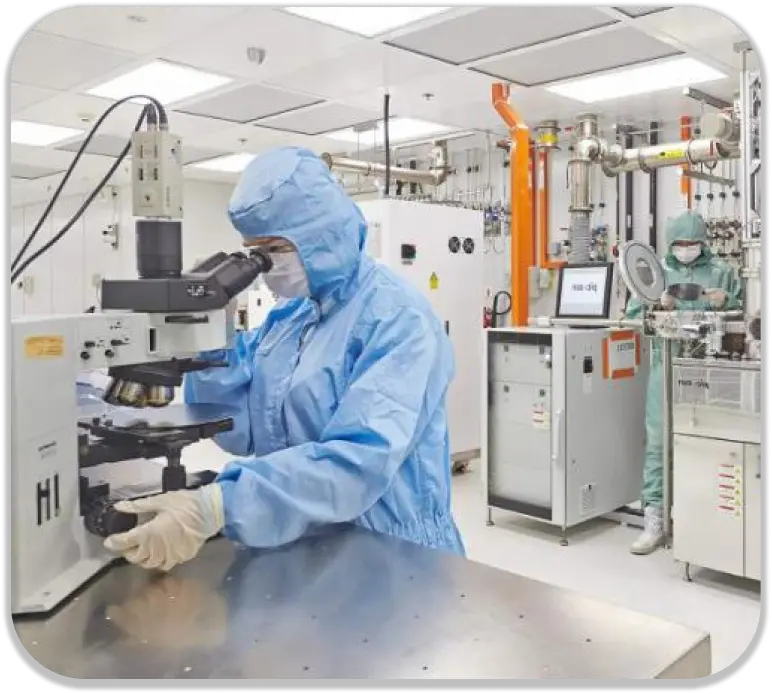Insufficient talent in the semiconductor manufacturing industry
It has been more than 30 years since the United States saw large-scale fab building, and not many builders in the nation have the knowledge, skills, and experience needed to complete these specialized projects. This problem is made worse by the fact that semiconductor manufacturers have to compete in an already competitive labor market with businesses in a variety of industries, including residential housing, for construction workers of all stripes, from qualified electricians to earthwork specialists. After fabs are finished and operational, they will also have to compete for a completely new kind of talent: the technical staff needed to run them.
An increased focus on sustainability
The semiconductor industry is placing more of an emphasis on sustainability since many of its most significant clients wish to lower emissions throughout their supply chains. Of the roughly 3,000 semiconductor companies, only around 80 have committed to emissions objectives; many more, however, have not yet explicitly expressed their sustainability ambitions.Because semiconductor manufacturing produces a significant amount of emissions related to finished goods, end users may be especially interested in learning more about it. For instance, the production of the chipset and the phone itself accounts for more than 60% of the lifetime emissions linked to certain mobile phones. More semiconductor businesses are anticipated to commit to more ambitious and practical emissions objectives as end users’ attention on reaching net-zero emissions grows.
Fab owners should also take accessibility to renewable energy resources into more careful consideration when determining where to locate new main fabs, as, excluding some downstream emissions, 55 percent of emissions from a typical fab are related to electricity.


Supply Chain Intricacy
A standard semiconductor production process may include steps in five or more nations and three or more international shipments. Because of technological complexity, labor cost dynamics, and industry consolidation, there are regional bottlenecks at almost every stage of the value chain. Semiconductor businesses may think about constructing or relocating value chain components closer to new fabrication locations in order to increase supply chain robustness. It could be necessary to update strategies for acquiring materials for operations and construction. The capital investment will go beyond the fabrication of the fabric because a true ecosystem will require more suppliers and infrastructure.
Adherence to regional
and federal incentives
Federal incentives totaling $60 billion for semiconductor manufacturing and research and development are set to be made available by the CHIPS and Science Act. However, companies seeking to receive funds must comply with a number of eligibility restrictions. In order to reduce the payback period for fab building, subsidies are essential, and businesses might prioritize locations that enable them to receive state or local incentives. funds and incentives may be affected by negotiations with government parties prior to and during fab construction; it is obvious that businesses receiving CHIPS program management funds will need to fulfill specific standards. Semiconductor businesses will have to think about future interactions with stakeholders at all levels of government far in advance of starting fab building. By considering other aspects that will influence expenses and schedules, they could further enhance the site selection process. To provide a comprehensive decision-making process, other site selection criteria (such as operations costs, capital efficiency, infrastructure, labor, carbon emissions, water, energy, land, and societal factors) must be thoroughly defined, examined, and weighed.

Challenges in managing and executing performance
Under normal circumstances, completing huge or mega capital projects on schedule and under budget is challenging. The present disruptive forces—inflation, supply chain disruptions, volatile commodity prices, and an overheated labor market—make projects considerably more difficult, and semiconductor companies may run into problems even if they adhere to best practices for construction throughout the project’s life cycle. For instance, even in cases where procurement orders were placed far in advance and verified by suppliers, far too many recent projects have experienced delivery delays for critical long-lead mechanical, electrical, and plumbing systems. Furthermore, because businesses are finding it difficult to locate enough skilled workers for construction projects, an overheated labor market may lower productivity and make it increasingly harder to complete projects on schedule and under budget.
Contact Us


